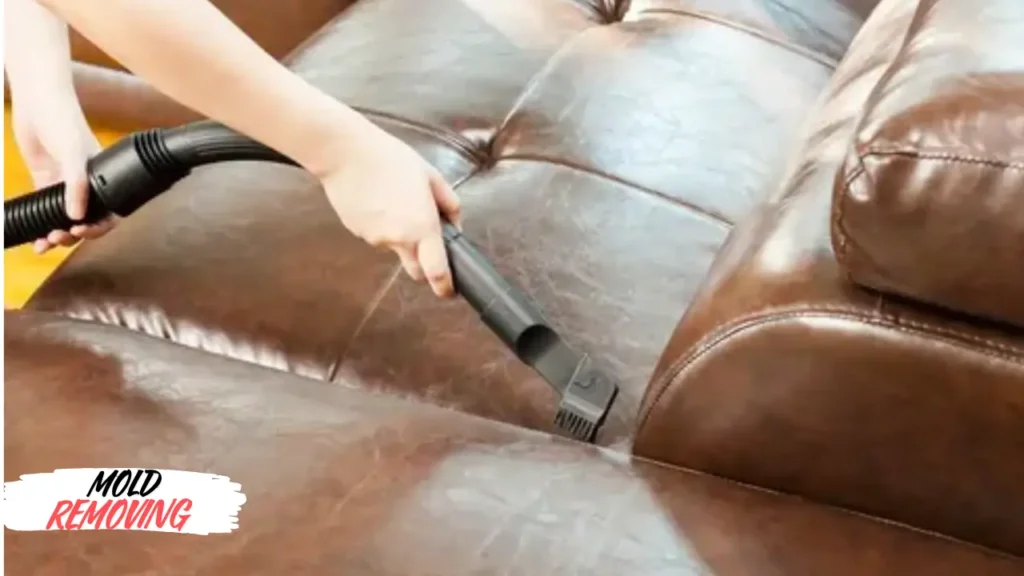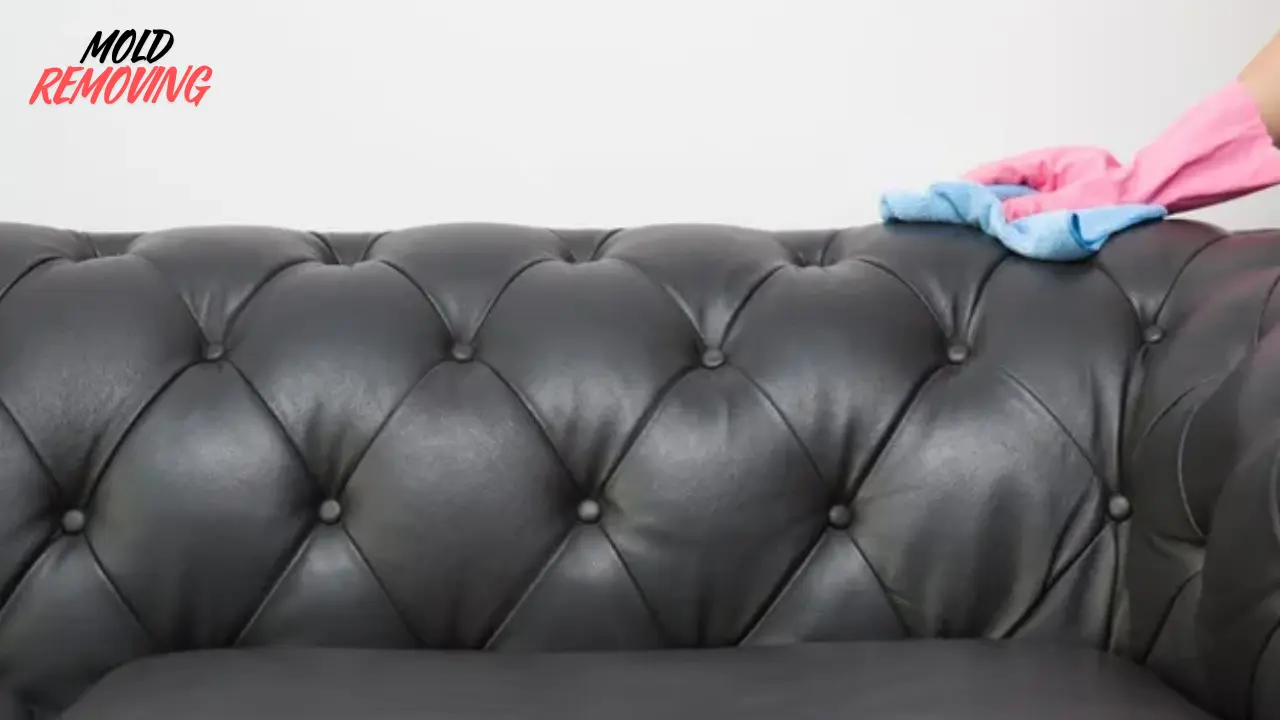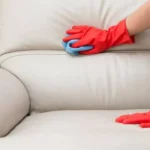Leather furniture adds a touch of elegance and luxury to any home. However, it can be a magnet for mold, especially in humid environments. Mold not only damages the leather but also poses health risks.
This guide will walk you through how to effectively remove mold from your leather furniture, ensuring it looks great and lasts longer.
Mold on Leather Furniture
What Causes Mold on Leather?
Mold thrives in damp, humid conditions. Leather, being a natural material, can easily absorb moisture, providing an ideal environment for mold spores to grow. Poor ventilation and spills that aren’t promptly cleaned can also contribute to mold growth.
Common Types of Mold Found on Leather
The most common types of mold found on leather are Aspergillus, Cladosporium, and Penicillium. These molds can appear as green, black, or white patches and often emit a musty odor.
Preparation Before Cleaning
Gathering Necessary Supplies
Before you start, gather the following supplies:
- Soft cloths
- Vacuum with a soft brush attachment
- White vinegar
- Isopropyl alcohol
- Spray bottle
- Leather cleaner and conditioner
- Protective gloves
- Face mask
Safety Precautions
Wear gloves and a face mask to protect yourself from mold spores. Ensure the area is well-ventilated by opening windows or using a fan.

Initial Steps to Remove Mold
- Inspecting the Furniture
Carefully inspect your leather furniture to identify all moldy areas. Note any seams or crevices where mold might be hiding.
- Vacuuming the Surface
Use a vacuum with a soft brush attachment to remove loose mold spores from the surface. This prevents spreading the mold during the cleaning process.
Cleaning Solutions for Mold Removal
- Using Vinegar Solution
Mix equal parts white vinegar and water in a spray bottle. Vinegar is a natural disinfectant that kills mold spores without damaging the leather.
- Applying Alcohol Solution
Alternatively, mix one part isopropyl alcohol with one part water. Alcohol is effective in killing mold and evaporates quickly, reducing the risk of moisture damage.
- Commercial Mold Removers
There are also commercial mold removers specifically designed for leather. Must follow the given manufacturer’s instructions for the best results.
Step-by-Step Mold Removal Process
- Applying the Cleaning Solution
Spray the vinegar or alcohol solution onto a soft cloth, not directly on the leather. Gently wipe the affected areas.
- Scrubbing the Mold
Use a gentle, circular motion to scrub the moldy spots. Avoid soaking the leather, as excess moisture can cause further damage.
- Drying the Leather
After cleaning, use a dry cloth to wipe away any excess solution. Should allow the leather to the air dry completely by a well-ventilated area.
Deep Cleaning Techniques
- Using Leather Cleaner
For stubborn mold, apply a leather cleaner. Follow the product instructions, usually involving applying the cleaner to a cloth and gently rubbing it into the leather.
- Conditioning the Leather
Once the leather is clean and dry, apply a leather conditioner. This helps restore moisture to the leather and protects it from future mold growth.
Preventing Future Mold Growth
- Controlling Humidity
Should Maintain low humidity levels in your home with using dehumidifiers or air conditioners. Aim for a humidity level should be below 60%.
- Proper Leather Maintenance
Regularly clean and condition your leather furniture to keep it in good condition. Should Avoid placing it in damp or poorly ventilated areas.
Handling Severe Mold Infestations
- Professional Cleaning Services
For severe mold infestations, consider professional cleaning services. Professionals have specialized tools and knowledge to effectively treat and restore your leather furniture.
- When to Consider Replacement
In extreme cases where the mold has deeply penetrated the leather, it might be more cost-effective to replace the furniture.
Maintaining Clean
- Regular Cleaning Routine
Establish a regular cleaning routine to prevent mold and keep your leather looking its best. Wipe down the furniture weekly with a damp cloth and condition it monthly.
- Storage Tips
If storing leather furniture, choose a cool, dry place. Use covers to protect it from dust and moisture.
Conclusion
Removing mold from leather furniture requires patience and the right techniques. By following this guide, you can effectively eliminate mold and prevent its return, ensuring your leather furniture remains a stylish and healthy addition to your home.
FAQs
1. Can mold permanently damage leather? Yes, if not addressed promptly, mold can cause permanent stains and weaken the leather, leading to irreparable damage.
2. Is it safe to use bleach on leather to remove mold? No, bleach can damage the leather’s finish and cause discoloration. Stick to vinegar or alcohol solutions.
3. How often should I condition my leather furniture? Condition your leather furniture at least once a month to keep it supple and resistant to mold.
4. What should I do if the mold smell persists? If the mold smell persists after cleaning, try placing bowls of baking soda around the furniture to absorb odors, or consult a professional cleaner.
5. Can I use essential oils to clean mold from leather? Essential oils can mask the odor but are not effective in killing mold spores. Use vinegar or alcohol solutions for mold removal.


